Top Picks: 35 Best Content Management (CMS)
Below is an incomplete list of CMS systems. A content management system (CMS) is software that allows for the creation, modification and deletion of Web content. Popular examples include Joomla!, Drupal and WordPress. Many CMSes provide a facility to publish Web pages in multiple languages, a multi-user capability, maintenance and backup. In the past couple of years there has been innovations in CMS called "headless" and Static Site Generators (SSGs).
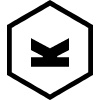
Kirby is the content management system that adapts to any project. Made for developers, designers, creators and clients.
Visit website➔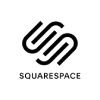
Squarespace is a website design and web building tool, used to give companies a quick and simple way to develop an online presence.
Visit website➔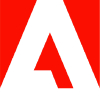
Magento is an open-source e-commerce platform written in PHP. It uses multiple other PHP frameworks such as Laminas and Symfony.
Visit website➔
Adobe Experience Manager connects digital asset management, a powerful content management system, and digital enrollment to help your brand flouris
Visit website➔
Agility is a Headless, cloud-native, API-First Content Management Platform hosted on Microsoft Azure.
Visit website➔
BigCommerce is an e-commerce solution in which company owners can build a store and sell their items digitally.
Visit website➔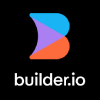
The drag & drop headless CMS. Eliminate long delays, missed deadlines, and rigid templates. Leverage our Visual Headless CMS to visually build and optimize web and mobile experiences on your existing sites and apps to drive growth, faster.
Visit website➔
Headless CMS with easy-to-use marketing dashboard and blazing fast content API for a modern digital experience.
Visit website➔
Canvas CMS is a cloud-based CMS that comes with a drag-and-drop design system, which makes it possible for non-technical users to design a custom website.
Visit website➔
CMS Made Simple is exactly what it calls itself: a simple-to-use, simple-to-manage content management system built using PHP.
Visit website➔
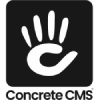
Concrete CMS is an open source content management system for teams. A website builder with built in tools make editing content easy.
Visit website➔
More than a headless CMS, Contentful is the API-first composable content platform to create, manage and publish content on any digital channel.
Visit website➔
Cosmic is a Headless CMS that empowers you to create, edit, and manage content across limitless websites and applications, from one convenient interface.
Visit website➔
Craft is a flexible, user-friendly PHP CMS for creating custom digital experiences on the web and beyond.
Visit website➔
Open source content management for your Git workflow. Use Decap CMS with any static site generator for a faster and more flexible web project.
Visit website➔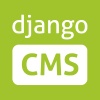
django CMS is the leading enterprise CMS powered by the community, backed by the django CMS Association.
Visit website➔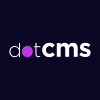
dotCMS is a Open Source Hybrid CMS — built on leading Java technology. We are the next-generation platform that supports both the flexibility of a headless CMS, with the efficiency of traditional content authoring.
Visit website➔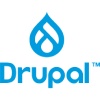
Drupal is a free and open-source web content management system written in PHP and distributed under the GNU General Public License.
Visit website➔
The world’s most flexible & secure open source CMS. Combining a thriving developer community with best-in-class support, ExpressionEngine is mission control for your website’s content.
Visit website➔
Ghost is a free and open source blogging platform written in JavaScript designed to simplify the process of online publishing for individual bloggers as well as online publications.
Visit website➔
Grav is a Modern, Crazy Fast, Ridiculously Easy and Amazingly Powerful Flat-File CMS.
Visit website➔
HTMLy is an open source databaseless PHP blogging platform. A flat-file CMS that allows you to create a fast, secure, and powerful website or blog in seconds.
Visit website➔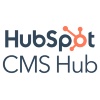
HubSpot CMS combines website creation with the power of a CRM platform to customize the entire buying journey, streamline marketing and sales alignment, and deliver true closed-loop reporting.
Visit website➔
HubSpot is an all-in-one platform that offers a range of features, including CRM, marketing automation, email marketing, social media management, landing pages, analytics, and more.
Visit website➔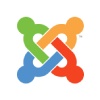
Joomla! is mobile-ready and user-friendly way to build your website. Choose from thousands of features and designs. Joomla! is free and open source.
Visit website➔
Kentico Xperience is a web content management system that uses ASP.NET and Microsoft SQL Server for development using Visual Studio, or through Microsoft MVC.
Visit website➔
Monstra is a modern and lightweight Content Management System. It is Easy to install, upgrade and use.
Visit website➔
OpenCart is a free and open-source e-commerce platform that's easy to install and customize. It provides a range of features, including product management, payment processing, and shipping integration.
Visit website➔
Oracle Content Management is a market-leading, cloud native platform that manages all your enterprise documents.
Visit website➔

Pico is a flat file CMS, this means there is no administration backend and database to deal with. You simply create .md files in the 'content' folder and that becomes a page.
Visit website➔
PrestaShop is an open source e-commerce platform that is available for free, with the option to upgrade to a premium version. The software is licensed under the Open Software License and is built using PHP programming language, with built-in support for the MySQL database management system.
Visit website➔
Publii is the perfect tool for creating beautiful, fast, and secure websites. With its friendly user interface, you'll be able to create SEO and privacy-friendly websites in no time at all.
Visit website➔
PyroCMS is an easy to use, powerful, and modular CMS and development platform built with Laravel 5.
Visit website➔
Sanity empower teams of all sizes with real-time collaboration, advanced version control and more.
Visit website➔
Shopify is an all-in-one commerce platform that makes it easy to launch your dream business and start selling to your customers, wherever they are.
Visit website➔
The Silverstripe CMS is a flexible PHP open source Content Management System that focuses on giving everyone involved in a web project the tools that they need.
Visit website➔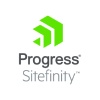
Sitefinity CMS is a content management system (CMS) that you use to create, store, manage, and present content on your website.
Visit website➔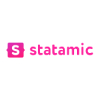
Learn why Statamic is the best Flat File CMS for most people. Bring fully dynamic websites and applications to life with nothing but YAML Front-Loaded Markdown files and HTML. Enjoy a beautiful, modern control panel anyone can use.
Visit website➔
Strapi is the leading open-source headless CMS. It’s 100% JavaScript and fully customizable.
Visit website➔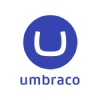
Umbraco is the leading open-source ASP.NET Core CMS. More than 700,000 websites worldwide are powered by our flexible and editor-friendly CMS.
Visit website➔
Volusion is a hosted e-commerce platform that provides an all-in-one solution for creating and managing an online store. It's easy to use and comes with a range of features, including payment processing, shipping integration, and marketing tools.
Visit website➔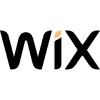
Wix is a website builder, an easy-to-use tool that lets you quickly create an online presence via a drag-and-drop interface—no coding or FTP knowledge is needed.
Visit website➔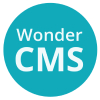
WonderCMS is the smallest flat file CMS. Free, fast & easy editing, only 5 files.
Visit website➔
43% of the web is built on WordPress. More bloggers, small businesses, and Fortune 500 companies use WordPress than all other options combined.
Visit website➔Good to know...
There are several different types of content management systems (CMS), including:
- Web CMS: These are the most common type of CMS and are designed to manage content for websites. Examples include WordPress, Drupal, and Joomla.
- Document CMS: These are used to manage documents and files, such as PDFs and Microsoft Office documents. Examples include Microsoft SharePoint and Alfresco.
- Digital asset management (DAM) systems: These are used to manage media files such as photos, videos, and audio files. Examples include Adobe Experience Manager and Bynder.
- Enterprise CMS: These are designed for larger organizations and are used to manage multiple websites, intranets, and other digital properties. Examples include Sitecore and Liferay.
- E-commerce CMS: These are specifically designed for managing online stores and product catalogs. Examples include Shopify and WooCommerce.
- Headless CMS: These are decoupled CMS that only manage content and provide an API to access the content, allowing developers to use any technology for the frontend. Examples include Strapi and Contentstack.
These are just a few examples of the many types of content management systems available. Each CMS has its own strengths and weaknesses, and the best choice depends on the specific needs of the organization.
I hear a lot about CMS plugins and extensions. What are they?
CMS plugins are software add-ons that extend the functionality of a content management system (CMS). They provide additional features and capabilities that are not included in the core CMS platform.
CMS plugins are often created by third-party developers and can be installed and activated by website owners or administrators. Plugins can be used to enhance website functionality, improve website performance, add new features, and customize the user experience.
Some common examples of CMS plugins include:
- Social media integration: Plugins that allow website owners to easily integrate social media platforms, such as Facebook, Twitter, and LinkedIn, into their website.
- E-commerce plugins: Plugins that add e-commerce functionality to a website, such as shopping cart functionality, payment gateways, and product management.
- SEO plugins: Plugins that help optimize a website for search engines by providing features such as keyword optimization, sitemap generation, and meta tag management.
- Contact form plugins: Plugins that provide easy-to-use contact forms that allow website visitors to contact the website owner or administrator.
- Security plugins: Plugins that enhance website security by providing features such as firewall protection, malware scanning, and spam filtering.
- Performance optimization plugins: Plugins that help optimize website performance by caching content, optimizing images, and minimizing file sizes.
Overall, CMS plugins are an important part of extending the functionality of a CMS, allowing website owners to add new features and capabilities to their website without the need for custom development.
Why do businesses choose a CMS to manage their content?
There are several reasons why teams choose a CMS for their website:
- Ease of use: A CMS allows non-technical team members to easily create and manage website content without the need for extensive technical knowledge or coding skills. This means that website updates can be made quickly and efficiently, freeing up time for other tasks.
- Collaboration: A CMS allows multiple team members to collaborate on website content, with built-in workflows for content creation, editing, and publishing. This ensures that content is high-quality and consistent, and that team members can easily track the progress of content development.
- Customizability: A CMS allows teams to customize the look and feel of their website to match their brand identity, with the ability to choose from a variety of templates, themes, and plugins.
- Scalability: A CMS allows teams to easily add new pages and content to their website as their business grows, without the need for significant additional development work.
- SEO-friendliness: Many CMS platforms are built with SEO in mind, with features such as customizable URLs, meta tags, and sitemap generation. This means that teams can easily optimize their website for search engines, helping to increase their online visibility and drive more traffic to their site.
- Integration capabilities: A CMS can integrate with other tools and services, such as marketing automation platforms, e-commerce platforms, and social media platforms, providing teams with a centralized hub for their online activities.
Overall, a CMS provides teams with a user-friendly platform for website development, allowing them to create and manage website content efficiently and effectively, while also providing the flexibility and scalability needed to support their business growth.
What are some key steps when considering a CMS?
Here are some key steps to consider when selecting a CMS:
- Determine your requirements: Before selecting a CMS, it is important to determine your specific needs and requirements. Consider factors such as the type of content you will be publishing, the level of customization you require, and the features you need to support your business goals.
- Evaluate available options: Once you have identified your requirements, research and evaluate the CMS options available that meet your needs. This includes considering factors such as cost, ease of use, available features and functionality, and community support.
- Test the CMS: Before making a final decision, it is important to test the CMS to ensure it meets your needs. This includes installing the CMS on a test server, creating sample content, and evaluating how easy it is to use and customize.
- Consider scalability and flexibility: As your business grows, your CMS needs may change. Therefore, it is important to select a CMS that is flexible and scalable enough to accommodate future growth.
- Look at support and documentation: Ensure that the CMS has sufficient support and documentation available, so that you can troubleshoot issues and learn how to use the platform effectively.
- Consider security: Security is an important consideration when selecting a CMS. Look for a platform that has a strong security track record and is regularly updated to address any potential vulnerabilities.
- Get feedback: Consider seeking feedback from others who have used the CMS you are considering. This includes online reviews, community forums, and talking to colleagues who have experience with the platform.